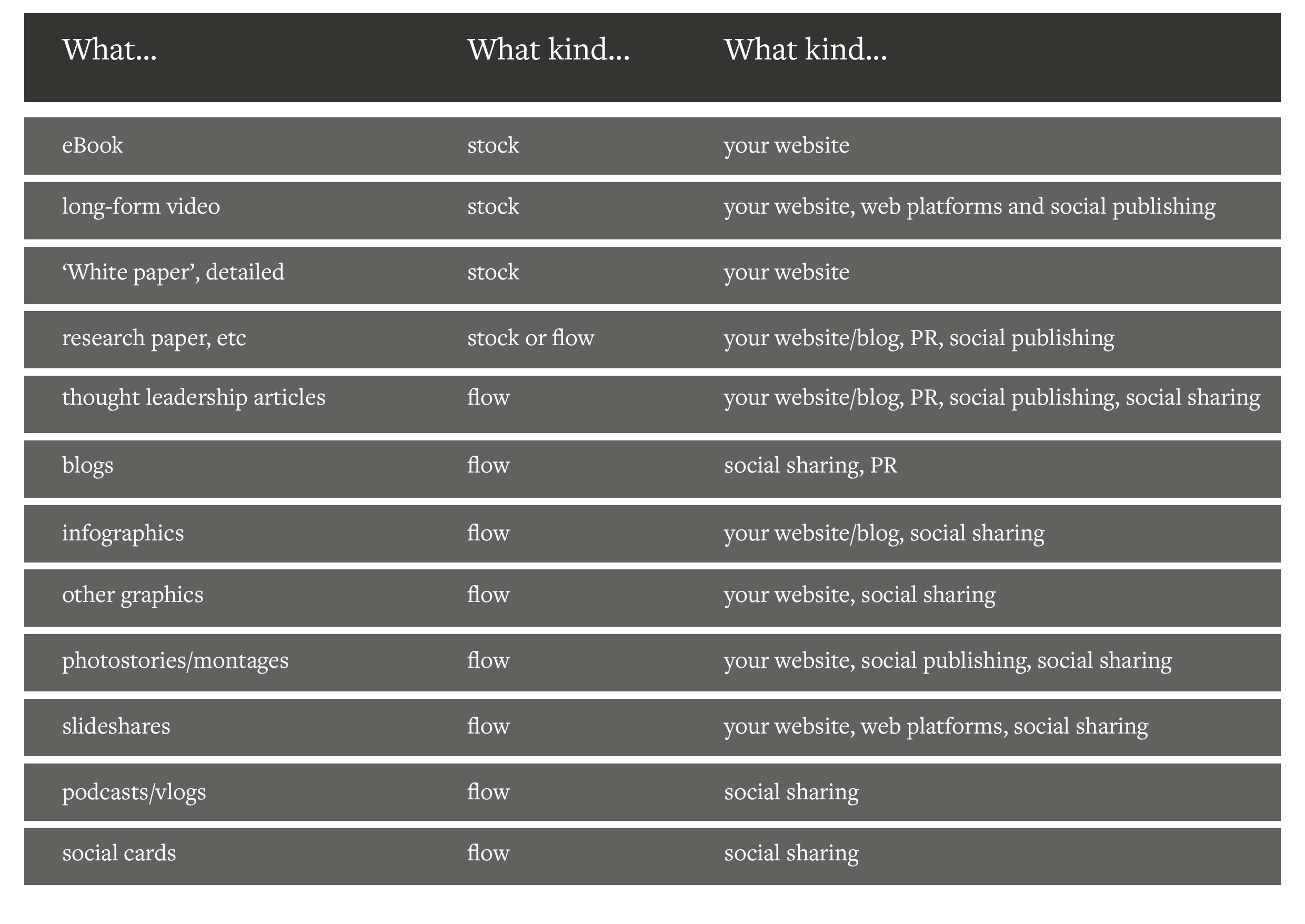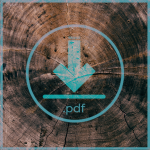Part 2 of a deeper dive into purposeful content strategy. Rediscover your mission, and harness it to your customers’ careabouts, to create uniquely compelling content.
Immunity – now there’s a slippery concept. Did you know that after three doses of the polio vaccine, 90 per cent of us will develop antibodies to combat the polio virus. Meaning that ten percent remain vulnerable. We accept that the polio vaccine confers immunity all the same, and at the level of a group or society it does. That’s because the level of ‘community immunity’ is such that the virus has limited opportunities to spread. I’m going to boldly state that your content strategy has a similar benefit: at a community level it renders you immune to creating meaningless, pointless content. And that delivers a significant shot in the arm (ahem…) to your ability to start new conversations with the people that you’d most like to do business with.
That’s where the analogy peters out, unfortunately. Content strategy doesn’t come on a sugar lump. That said, our favourite style of content strategy is lean and agile, and pays back quickly.
As a reminder, here are the five questions you’re always trying to answer – or answer better – when creating a content strategy.
- Why are you writing your content?
- Who are you writing your content for?
- What are your themes and what will link them – our mission?
- What actions do you want to provoke?
- What directions and forms can you take this in?
This blog is a deeper dive into the last three questions. For an overview of the entire process, go here. The first two questions are addressed in detail here.
What are your content themes and what will link them?
Right – to get this done, you’re going to need some answers to ‘Who are we writing our content for?’ – and there’s an exercise here to help. Complete that, and this challenge then becomes mostly a matter of detective work, with a just a dollop of imagination. Again you can do this yourself or with a group. Coffee always helps.
Exercise: What’s our thread?
Start here – From the last exercise you’re going to have at least ten – and hopefully more – burning questions that are highly relevant to your best customers. Put them all together in one document
- Group those that seem to share a common theme
- Explore those themes a little – they’ll suggest other, linking themes
Then – Write down the themes as if they were chapter headings in a book you were going to write. You can use whatever order makes sense to you.
Now – the imaginative bit: if those are your chapter heads, what is the title of the book?
- Create a few of them. Try them out.
Finally – try and write the ‘blurbs’ – that punchy little summary – for the imagined back cover.
If you’ve previously identified your purpose, then you have a huge head start in this exercise. All of your content should be steered by it. You’re committing to tell your story from the perspective of your purpose, and share it with as many people as you can. For the yet-to-be-purposeful, you’ll use your book title and blurbs in just the same way. They will give you a strong sense of mission. The chapter heads are the themes that need to resonate through your content, as you answer your prospects’ most pertinent questions.
Top Tip
That list of prioritised questions you’ve just created is the starting point for your content plan. Each question is at least one – more likely several – content opportunities. At Cohesive, we tend to create content in ‘triplets’ – for instance a ‘how-to’, a piece to add extra context, and a complementary case study.
What actions do you want to provoke?
To re-emphasise, content is all about generating either action or reaction. If thought leadership is your major goal for the here and now, then your content will be expert, insightful, honest, and generous. The list of actions you’d like to inspire includes likes, shares and comments. That suggests a variety of content types, contrasting long-form content with short-form and infographic-style material, which is more easily shared socially.
So there’s this triangular relationship between your goals, your content and the actions you seek to inspire. Whatever you decide to achieve in one corner has an effect on the other two. So it follows that the value you place on each action/reaction is going to depend on your goals and shape your content.
We’re all familiar with the regular actions. A like is more than a stroke to the ego: on social platforms it helps the algorithms to decide how far to push your content. And on platforms like LinkedIn Publishing it’s one indication that someone read to the end of your piece, which is worth knowing.
A click-thru to a follow-on piece of content is demonstrating more trust and commitment still. If someone shares your content, they’re not just paying you a huge compliment, but pushing you out to potentially a whole new audience. One that, you can reasonably assume, trusts the sharer’s tastes in great content.
In my view, comments demonstrate another level of commitment. It’s the start of a conversation – however brief. And in most cases the person is going to identify themselves to you. In a GDPR world, you might not have consent for anything other than the immediate exchange of views, but still. Ultimately, when someone shares an email address and consents to a regular stream of communication, you’ve converted a contact to a prospect. Well done you.
This begs an important and potentially tricky question. When and how to ‘gate’ your content? There’s no space to fully explore this here, but I have an opinion: I hate gated content. You will argue that an email address is the least that someone can offer you in return for your highly valuable content. And what other leverage could you exert, in any case? My response is that the quality of your content is your leverage. If I’ve consumed your content over a period; if you’re one of those sites that I check back with over and over again; if you then ask, rather than demand, my email address, then I’m going to trust you with it. And trust is the important issue here. By the way, in the spirit of GDPR, an email address with strings attached, exchanged for content at a gate, isn’t ‘consent, freely given’. Noodle on that.
Maybe the best and simplest action is when someone reaches out by email or phone, and asks for a conversation while referencing a piece of your content as an influence. Job done. Be sure to celebrate properly.
That’s maybe as as far as I can take you on this particular question. You’re going to have to evolve your own vision here. Start simple. Measure the outcomes. Learn.
What directions and forms can you take this in?
There’s a chance we’re getting ahead of ourselves here. Then again, we saw above how your goals influence the forms your content takes. Thought leadership needs long-form, short-form and easily shareable imagery for instance. So it kind of makes sense to at least get the process defined and started here.
First off, we need to distinguish between the kind of valuable content we’ve been discussing so far, and evidenced sales content. The first kind is helping, and the second is selling. Yes, you definitely will need data sheets, a sales pitch presentation, proofs of concept and detailed case studies. But our focus here has been and will remain the helpful kind.
It’s useful to divide valuable content into two broad categories. ‘Stock’ content is weighty, authoritative and expert. It stands the test of time. ‘Flow’ content has immediacy. It can be ‘of the moment’. Flow is what you produce between the big efforts of stock content. Consequently it’s shorter-form. Here is a great article – flagged to me by those VC folks again – which gets further into this.
You’re going to aim to produce an artful mix of both kinds, determined by your content strategy. Regardless, your content always needs to be insightful, helpful and as unique as you can make it. If it’s driven by your purpose – that bloody ‘P-word’ again – then unique is kind of baked in at the start.
But still, the world really is your oyster. You’re free to choose, I’d encourage you to experiment, and your definition of ‘ideal’ could and should evolve over time. Balanced against your instincts and ambition will be the resources and skills available to you, the inclinations of your subject matter experts, the dictates and fads of social media, and so on.
There’s no fixed recipe. Here’s a tick list – not exhaustive by any stretch – of content and applications. See what makes sense for you:

Top Tip
It’s a very smart move to build your content strategy and plan around a rolling sequence of campaigns. Campaigns impose their own order on the kinds of content you’re going to need. Treat each campaign as an opportunity to test and learn. Always be testing a thesis – about your customers’ careabouts, actions inspired, etc. Your learning is one seriously valuable outcome.

Taking the next steps
We’ve two more blog and a workbook, leading you towards a pragmatic-yet-purposeful content strategy and plan. Each blog outlines exercises and top tips to help you answer some of those gnarly questions above. The workbook lets you take that stuff offline, stuff it in your workbag, and jot down notes when the mood or moment grabs you.
Let me know how you’re getting along, and fire off some questions – andyw@wearecohesive.com – or comment below.
 Like what you’re reading?
Like what you’re reading?
You can download this guide to use as a resource or to share with colleagues. Click the button to download your PDF.




What do you think?